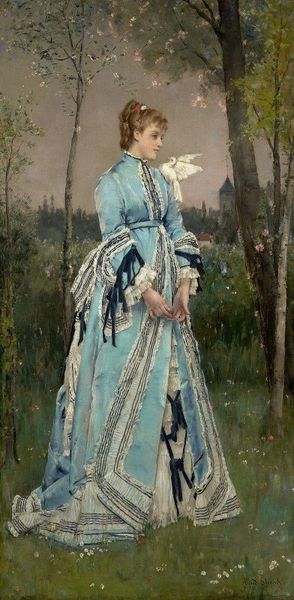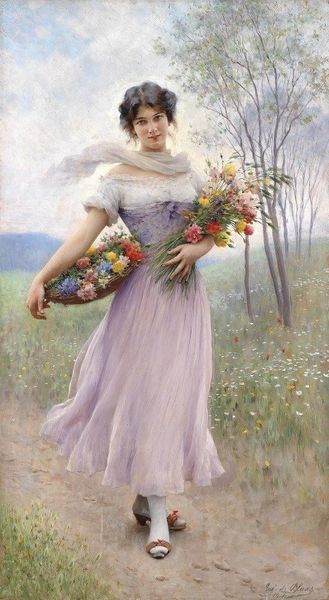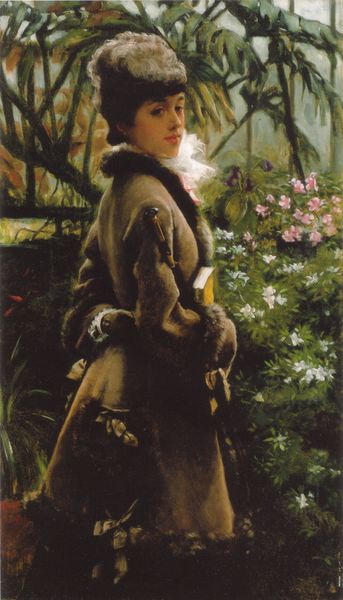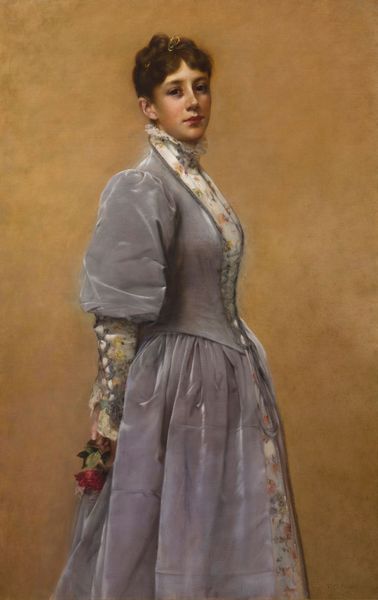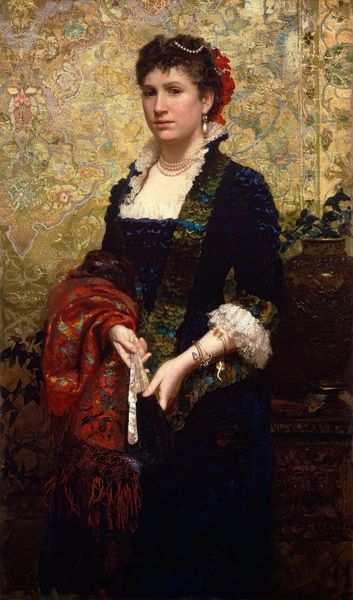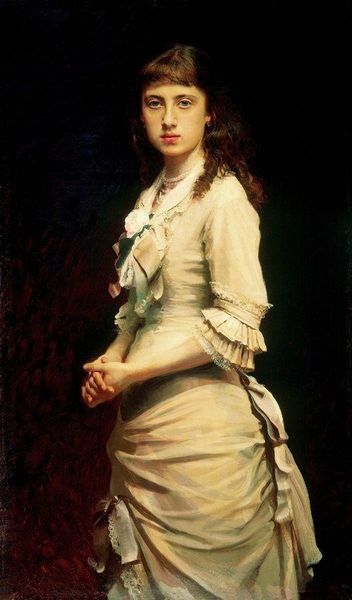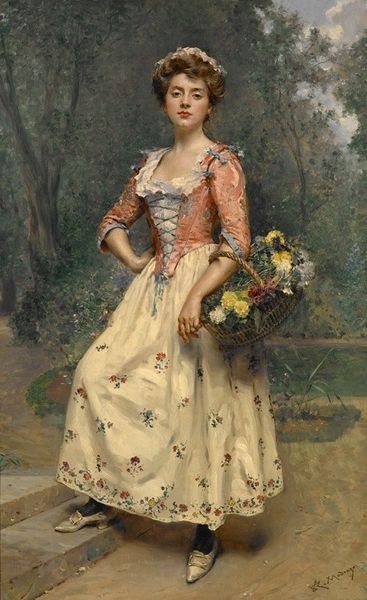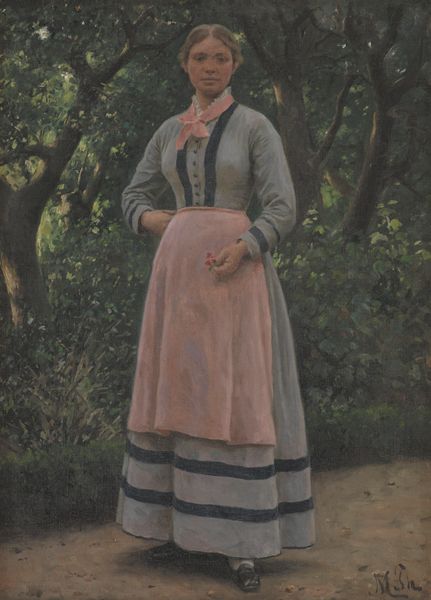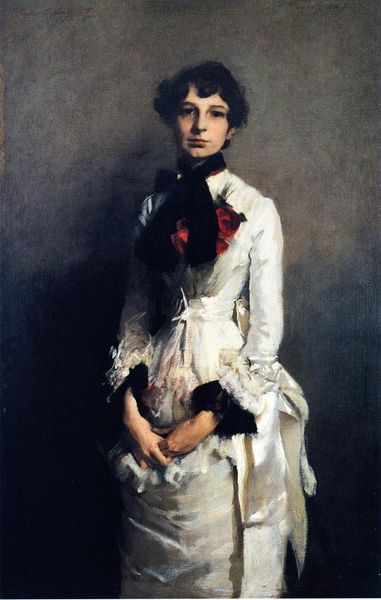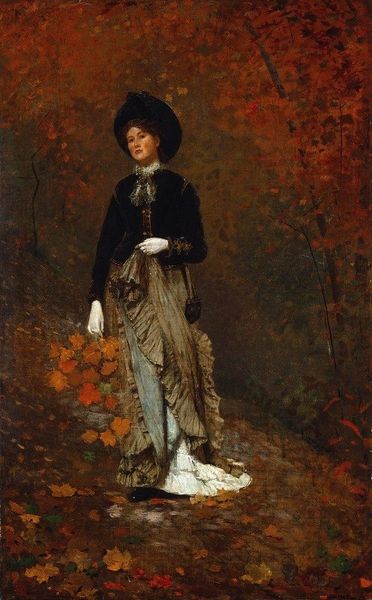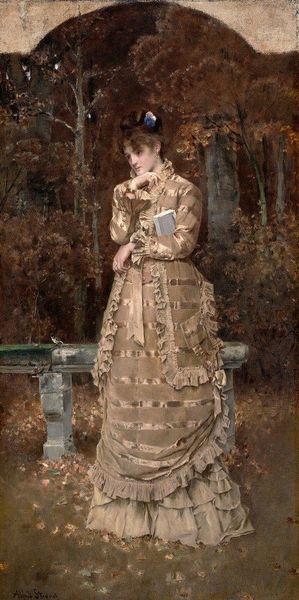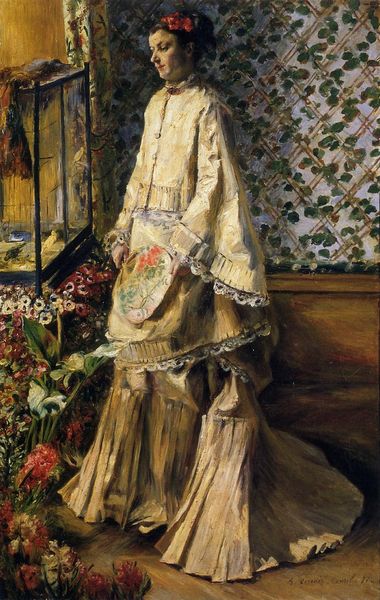
Dimensions: 111 x 65 cm
Copyright: Public domain
Curator: Looking at this piece, the overwhelming feeling for me is one of melancholy. There’s a stillness to the young woman's face. Editor: This is Ilya Repin's “Autumn Bouquet. Portrait of Vera Repina,” painted in 1892. It’s an oil on canvas, housed at the Tretyakov Gallery in Moscow. Beyond the woman, we see hints of the Russian countryside, so typical in much Russian art. Curator: The bouquet is crucial, I think. She clutches the flowers, not with joy, but almost…protectively. And they aren’t in full bloom—they feel like the last gasp of summer’s abundance before the harshness of winter sets in. They almost reflect loss. Editor: Absolutely, and the selection of autumn flora in the bouquet likely isn't accidental. Artists, including Repin, were greatly influenced by symbolism at the time. Consider the significance of particular blooms during this period—often embodying themes of mortality, beauty, and the fleeting nature of time. Curator: Interesting point about the specific flowers, there’s something about the high lace collar and the puffed sleeves of her dress, as well. The style evokes a kind of constrained elegance. Like, this isn't a spontaneous field gathering; it's staged in some way, isn't it? Editor: Exactly. As a society portrait, the painting provides a visual record, subtly hinting at the social standing and the evolving tastes of the Russian upper class toward the end of the 19th century. But beyond that, she looks like she’s not meant to be holding flowers in an open field; it evokes how some groups feel as outsiders and have no place in these structures. Curator: That’s beautifully said. Her presence does pose an uncomfortable question. What exactly is *her* place within that broader society, that countryside? Is she at peace or just visiting? Editor: Reflecting on it now, the enduring power of Repin's artwork stems from its ability to intertwine these different levels of historical experience with the emotional nuances. Curator: I agree, leaving me contemplating this woman’s role within a very specific moment. Her melancholy expression persists, provoking me to understand more deeply her position.
Comments
No comments
Be the first to comment and join the conversation on the ultimate creative platform.
